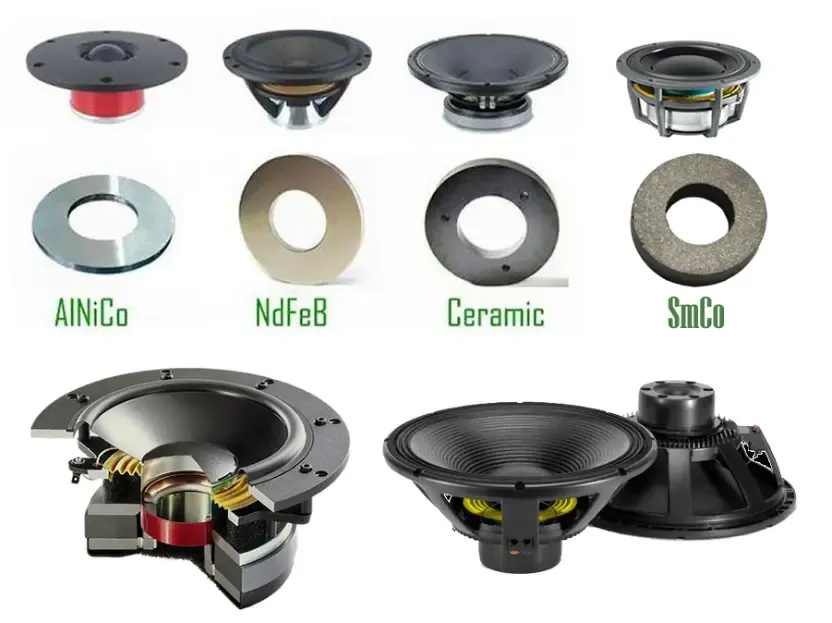Understanding the achievement of audio performance requires knowledge of the relation between audio speakers and magnets. The principles of mechanics, acoustics, and electronics provide an explanation for the working of speakers. Speakers are divided into different classes based on component parts, electrical parameters, sound quality, and the price of the speaker system. This article looks into the various types of magnets that are used within the ranges of speakers and their corresponding performance in the speakers and also focus on the future directions of development in speaker technology.
Magnets used fulfill the purpose of magnet’s creation are speakers are, first and primary, providing a magnetic field for the interaction with voice coil and sounds it produces. In speaker design, the most common types of magnets used are ferrite and neodymium. Ferrite magnets are one of the most common types used because of low price and long life and hence are used in many low budget speakers. On the other hand, the prices of neodymium magnets are very high, but they're better in compact design. Their strength permits smaller designs for speaker without compromising on sound, which is more important considering today’s market.
The design of a speaker is dependent on the type of magnet used within the system. For example, neodymium magnets offer more efficient designs which can result in lighter speakers. This is particularly useful for mobile audio devices that are sensitive to weight and size. Moreover, the position of the magnet in the speaker also impacts the quality of sound produced. A strategically placed magnet can reduce distortion and enhance the clarity of sound, providing listeners with an improved experience.
Furthermore, the performance of speakers is not only dependent on the magnet used, but also on the manner in which the magnet is incorporated into the speaker design. The enclosure and even the diaphragm materials affect the perception of sound. There are increasing attempts to remodel and reconfigure different materials and parts to maximize the interaction of the magnet with other components. This is important with the growing trend in consumer needs for high-fidelity audio.
The audio's evolution goes hand-in-hand with changes of the technology behind speaker magnets, by recent days, there are more trends leaning toward the use of eco-friendly materials for magnets. Sustainable materials are being used not only in magnet production, but also in the manufacturing process as a whole, demonstrating environmental responsibility for the audio industry. The advancements in the technologies used in making magnets is helping create more efficient and powerful speakers capable of delivering high-quality sound in smaller products. This change will most likely remain due to consumer demand inclined towards easy-to-carry audio devices that give out premium sound.
As stated before, the impact magnets have on steering design optimization and the quality of sound a speaker emits is significant. A manufacturer’s construction choices regarding sound reproduction devices could be heavily determined by the type of magnet used. As technology and consumer behavior progresses, the market is bound to witness increased elegance and creativity in the construction of speakers because of the breathtaking possibilities modern-day magnets offer. For consumers and manufacturers wishing to understand the ever-evolving world of audio technology, taking into account all of these components becomes vital.




